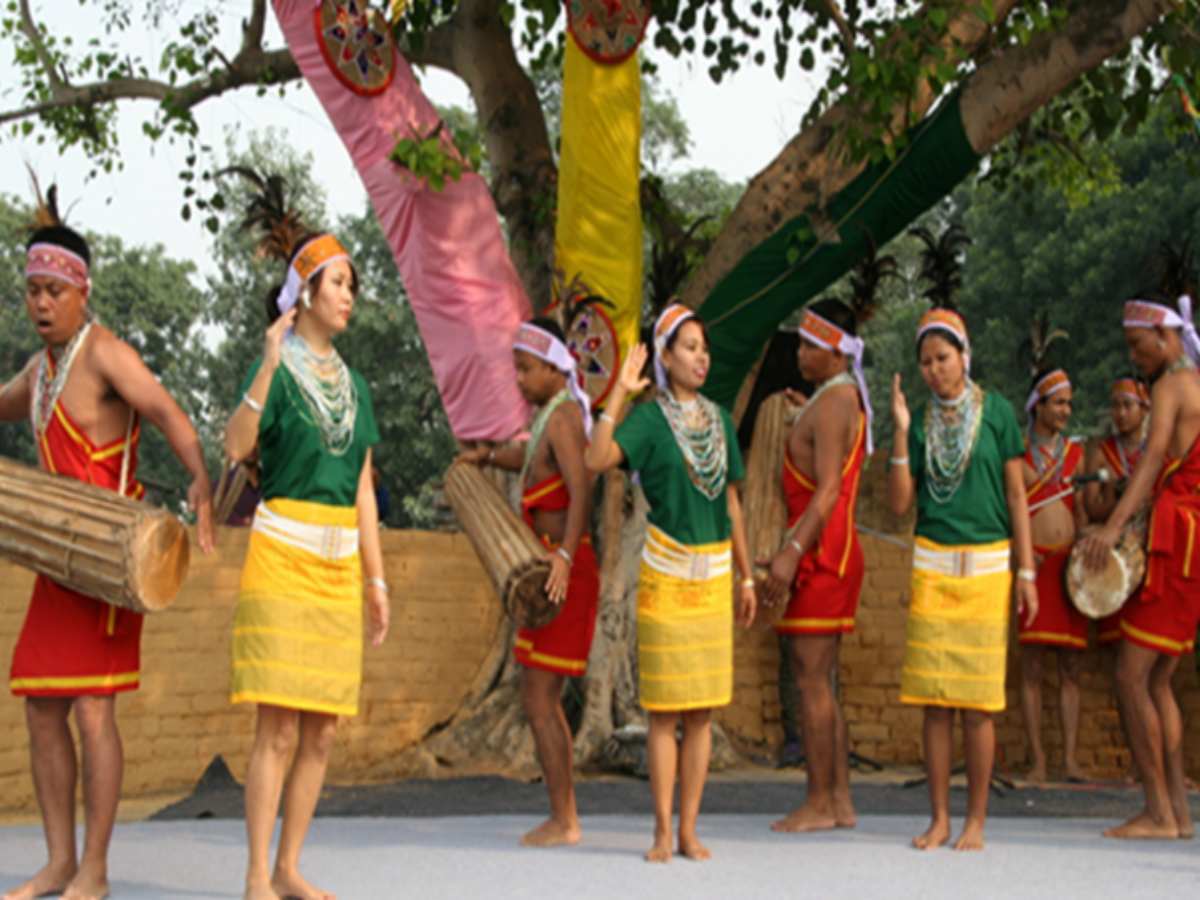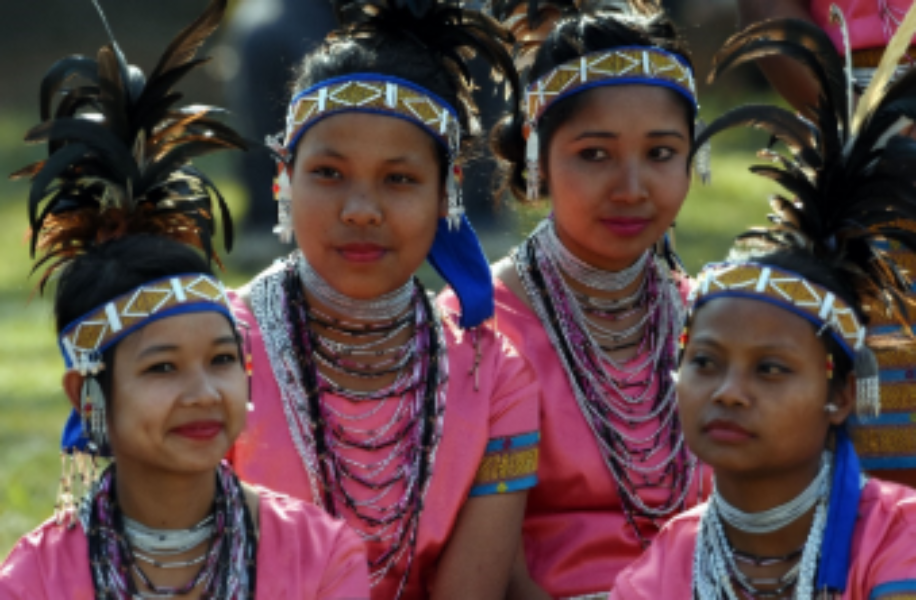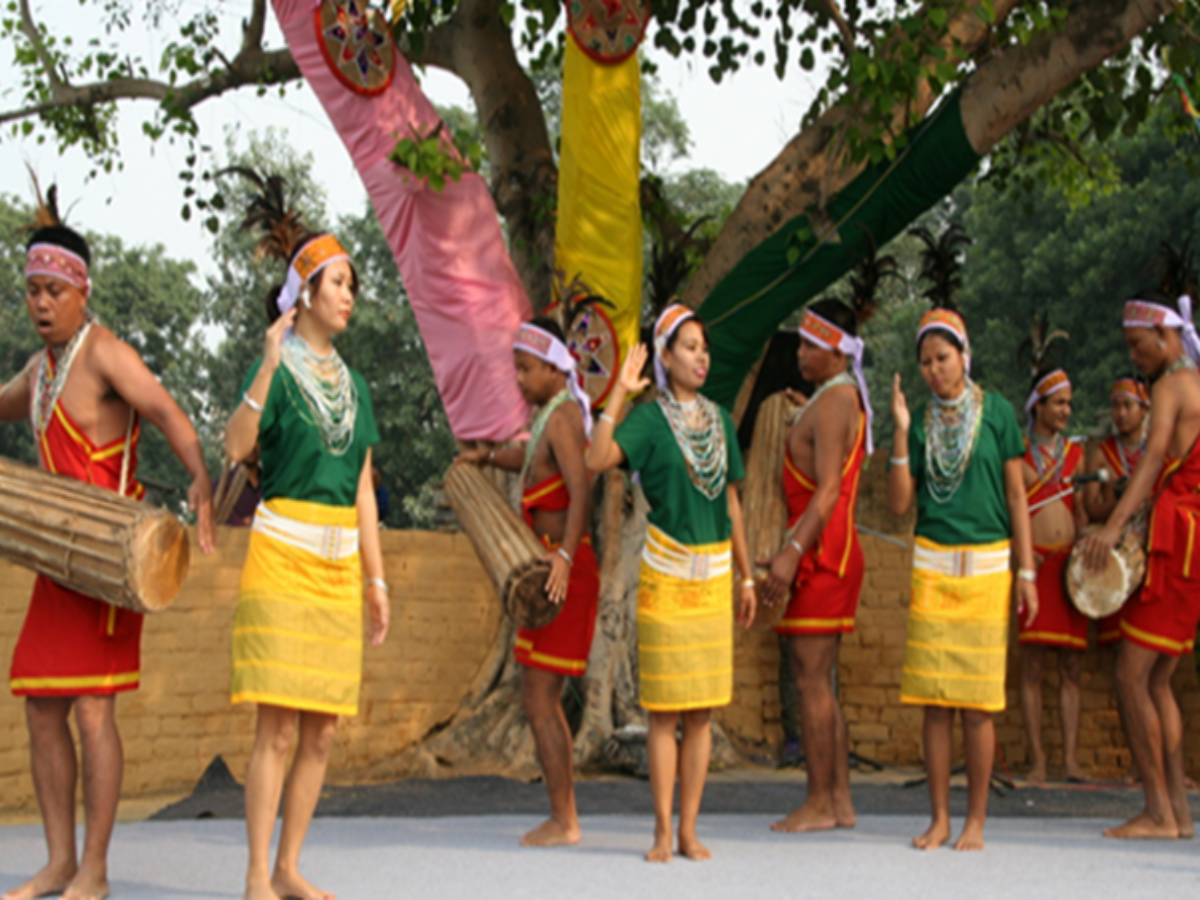State
Tribe Name
Art Type
short description
The Garo Tribe mostly lives in Meghalaya, Assam, Tripura, and Nagaland in India as well as a few regions of Bangladesh. They belong to the Tibeto-Burmese ethnic group and are styled as A'chik Mande which means "hill people". The Garos people carry splendid legacies that are manifested ostensively in their attire.
Thumbnail

Filter Postion
Left
Filter Background
Off
Theme
Filter Header Image

content
Image

description
The Garo Tribe mostly lives in Meghalaya, Assam, Tripura, and Nagaland in India as well as a few regions of Bangladesh. They belong to the Tibeto-Burmese ethnic group and are styled as A'chik Mande which means "hill people". The Garos people carry splendid legacies that are manifested ostensively in their attire.
Image Mode
landscape
Image

description
Dakmanda-the traditional wrap-around skirt worn by Garo women. It is liked for its fine floral and geometric patterns, especially the Mikron (diamond motifs symbolizing "the eye"). It is woven from Kilding cotton and is supplemented with the decorated Chador shawl. The women, in earlier times, used to wear Eking-simple loincloth weighted with ivory beads as part of their tradition, but currently, it has been replaced by the Dakmandas. Simpler variations of it include the Daksari, a simple yet economical wrap, and Gana, a much shorter garment worn daily. The ensemble is complemented by the traditional Kotip headband, made of cotton and embellished with beadwork.
Image Mode
landscape
Image

description
Garo men traditionally wear the Gando, a 6-7 feet long waistcloth carrying brass plates and often with Mikron motifs. There is also the Kotip headband that is dark blue or white with bead embellishments used by them. Another essential element is the Pandra, a crosswise cloth that drapes over the chest. Both rubies and gaudy stones comprise necklaces of men and women to show their identity in culture-understood as 'Rigitok'. Prettifier, Garo dresses indeed are a reflection of their resplendent culture, by maintaining certain singular weaves and patterns of the formerly brightly colored and patterned cloth pieces.
Image Mode
portrait
promoted
Off
Verified
Off
